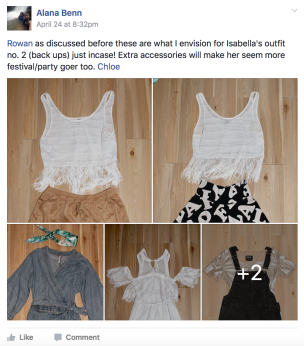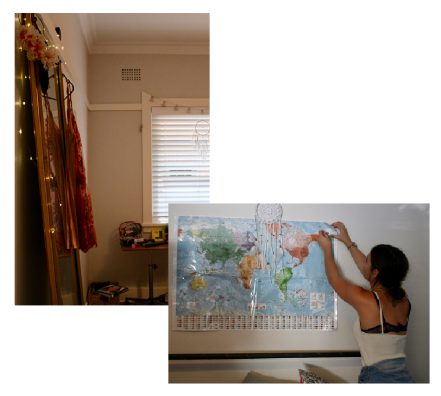Throughout the course of advertising, the pitching paradigm has become almost second nature to clients and agencies. While its generally considered an integral part of winning new business, it’s hard to ignore the extreme preparation, man hours and cash that goes on behind the scenes, often to stand in front of a panel and have your master game plan binned, or accepted (which is often unlikely). According to the AAR, even of the work that wins pitches, a whole 56% of it is discarded. Surprising? Maybe not. Therefore, should we be asking the question; has pitching gotten out of hand? And, are there better ways to manage a pitch?
Let’s start with the immense time and effort put towards the build-up to a pitch, which usually occurs for 1-2 months. It’s no wonder the agency talent isn’t entirely burnt out by the end, hindering their power to continuously be creative even if they won… as by that stage, they probably hate the account their gunning for and feel demotivated. An article posted by MindEcology seems to support this idea, stating that “Burned out people work slower than their enthusiastic counterparts and eventually, they have a way of taking off and causing agencies to scramble and burn up time trying to replace them.” The underlying fact is that agencies are working a silly amount of unbillable hours stimulating their brains and energy, more than likely towards an unprofitable outcome. In a report posted by Campaign, the top 50 Advertising agencies spend up to 7.5 million euros per year on pitching. It seems crazy, but if you’re involved in this incredibly competitive industry, that’s probably normal. A possible solution to this might be, having a strict limit to the amount spent on a pitch. For example, efforts must not exceed $20,000. This would allow more time to work on existing accounts and wouldn’t drain agencies out as much, financially and emotionally.
Richard Morris, the business Development Director at DDB London, offers his opinion on cutting down time and investment, with this alternative. “Why not limit how long we all spend on any particular pitch; let’s do it really intensively in a week rather than thrash around for a month. With less time to fanny about, we’re bound to spend less physically. If management did nothing else for a week, clients would actually get a lot more of their time, and just think of the saving on salary costs.”
When it comes to ideas, how do you choose the best one if the work is subjective? That’s another issue that agencies face. Like the old saying, “one man’s trash is another man’s treasure”. Often ideas are preciously crafted, admired and protected, and agencies are basically handing them out with no price tag. That’s a bunch of free thinking, and who’s not to say one witness on the panel isn’t planning to head for the hills with that cracking idea, and come back a millionaire? And while no human wants to be the bearer of bad news, there’s generally a shortlist of just four, someone’s got to lose, and no one likes to feel their ideas are worthless. I can’t help but think, have we unintentionally placed a lesser value in the work of humans?
Constantly immersed in this industry, we are somewhat receptive to popular agencies collecting more awards, based on factors such as; reputation, media coverage, successful track record and so on. Agencies that fall more under the radar, may have to strive harder to get that signature, contract, or funding their looking for. If an agency is unlucky enough to receive the late afternoon slot, it’s vital to hold attention, as its likely the judging team have dinner and Netflix on their mind, not as switched on as they were at 8am that morning. With that in mind, making a lasting impression is crucial. Humans tend to respond to a great story, therefore if you want to cause action, your pitch needs to tell one. This is a chance for the pitching team to get extra creative, considering room ambience, props, costumes, music or food and beverage for instance.
In seeking third party guidance, intermediaries play a role in helping steer agencies so they grow and evolve, as well as advising decisions. TrinityP3 is one example of an intermediary that strives to help clients achieve commercial purpose through creative processes, in turn improving their marketing output.
Agencies should be cautious and particular about who and what they’re pitching for, and also who they’re up against. Agencies, when pitching, have been described as “doctors operating in the dark, hardly knowing who the patient is. They barely know the organization or how they work, or what they’re like behind closed doors”. Therefore, before agreeing to participate in a pitch, it’s of critical importance that an agency queries if they have any chemistry with the client or can see a future business relationship, and i’m talking years, not just a summer fling. On the other side of the spectrum, clients need to be rigorous in what their asking for. In most pitches, there is an unnecessary level of secrecy, however it’s important to be transparent, have respect, bravery, timing down packed, have good access and navigation. So, it seems sensible that from the get go, the agency bombards the potential client with questions, to get down to the very nitty gritty details of what will give them the best shot at winning. Additionally, finding out who the decision makers are because essentially, they will make or break.
Another challenge area for agencies is when dissecting the brief, who makes up the pitch team. A set of fresh minds that have minimal knowledge of the client’s brand, or experts in a certain field? If you ask Erik Saelens, Founder and Executive Strategic Director of Belgium’s Brandhome group, he believes pitching is all a bullsh*t illusion reflecting false reality. He backs his firm opinion up with ten reasons, and his company has shamelessly “ditched the pitch”.
For or against, pitches are here to stay. Although they won’t paint a picture of the promised land, at the end of the day, agencies will do whatever it takes to win more business, and in a highly competitive industry, we’re all here for one thing: the money.






 With styling for the ‘older girl talent’, I stuck identically to the original advice laid out in the booklet with a little tweaking and ‘girl next door’ idea in mind. Casual plain shirt with rolled sleeves, light-natural make up, a few crinkles, comfy jeans, hair not too neat and minimal jewellery was the look for this character in the first scene, and I think it was projected well. I approached her second look to portray trendy, cool-hip and reflect the persona. Converse shoe provided a street wear feel while hoop earrings screamed “this girl knows fashion”. I was thrilled that my close friend Savannah could play this role and it made communication about requirements an easy process.
With styling for the ‘older girl talent’, I stuck identically to the original advice laid out in the booklet with a little tweaking and ‘girl next door’ idea in mind. Casual plain shirt with rolled sleeves, light-natural make up, a few crinkles, comfy jeans, hair not too neat and minimal jewellery was the look for this character in the first scene, and I think it was projected well. I approached her second look to portray trendy, cool-hip and reflect the persona. Converse shoe provided a street wear feel while hoop earrings screamed “this girl knows fashion”. I was thrilled that my close friend Savannah could play this role and it made communication about requirements an easy process.














